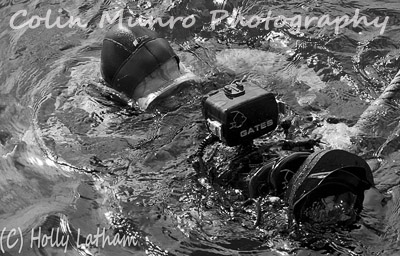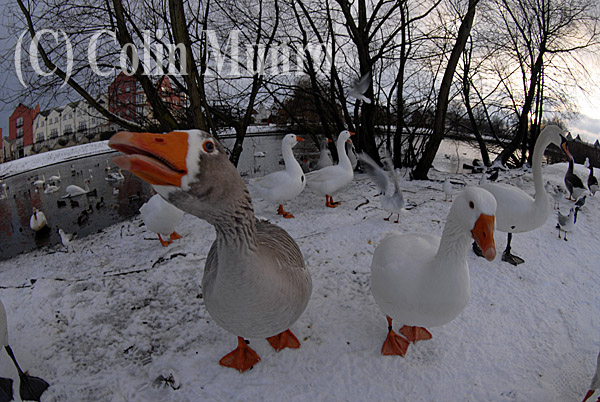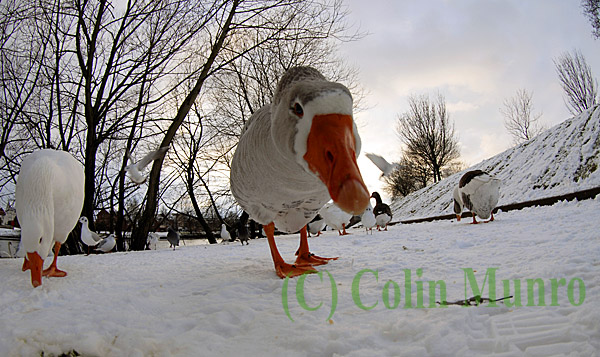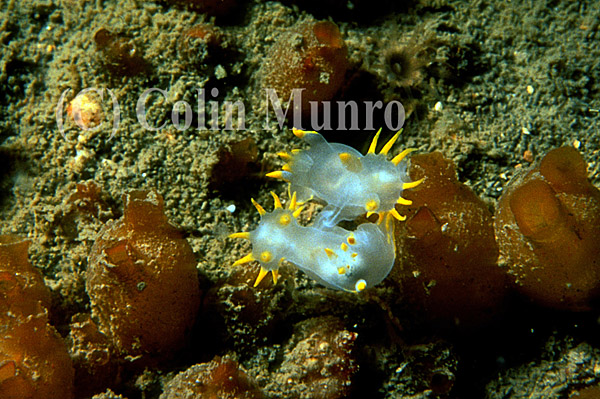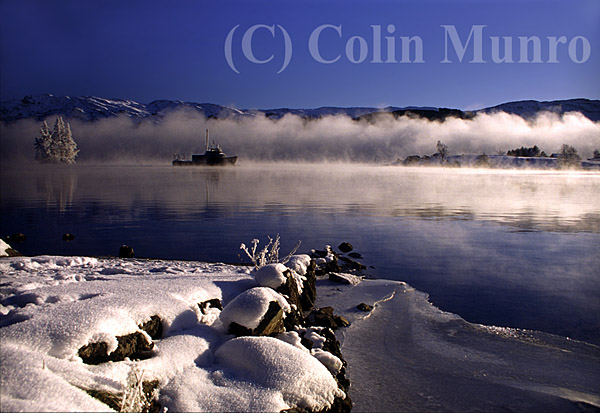
Humpback whale swimming under a fishing vessel, Lyme Bay, Southwest England
I have just uploaded what is probably the worst whale picture you’ve ever seen, or are likely to. For a start it was taken with an old Nikonos III camera, without use of an additional hand held light meter. Those old Nik IIIs were purely mechanical, so no built in light meter; thus exposure was based on the ‘guesstimate then bracket like hell’ maxim. Secondly, it was taken with the only wide angle lens I owned back in those days, a cheap plastic supplementary lens of rather dubious sharpness. To be honest the lack of sharpness was not really an issue. I was shooting in turbid coastal waters, where horizontal visibility near the surface was between 8-10 metres (26-33 feet); pretty good for the area as it happens but lousy for shooting whales. On top of this strong winds had been blowing so the shallow coastal water was nicely loaded with suspended sediment lifted off the seabed. This made for a rather hazy 8-10 metres visibility. As if that weren’t enough, conditions were further complicated by this occurring around 7.30pm, so the sun was getting low and light levels below the surface were dropping like a stone. To cap it all I had no fast colour film with me (yes this was waaaay back in the pre-digital days). I had not gone diving to photograph whales. I knew the visibility was likely to be lousy so I had arrived armed with a set of extension tubes for macro-photography and several rolls of Fuji Velvia 50 slide film. This produces wonderful, detail and rich, saturated colours, But it is slow! Certainly useless for photographing something the size of a bus in turbid, low light conditions. Throwing everything out of my camera bag over the deck of our dive boat I fished out an old roll of 400 asa film. Now that was more like it; still going to struggle but at least there was a chance of a recognisable image now. Only problem was it was black and white negative film (so long ago I forget exactly what). Still, it was that or nothing. So I loaded it with shaking hands are rolled over the boats gunnel into the water. The slowest shutter speed available on Nik IIIs is a 30th sec, so I wound it right down and hoped for the best. Black and white negative film is more forgiving of poor exposure than slide, which was just as well really.
So I guess I was quite fortunate (and there was a lot of luck) to get any recognisable images at all. But apart from nostalgia, why hang on to them, and why publish them online? The pictures are nearly two decades old now and after all, I have lots of lousy quality pictures from years gone by. The main reason, apart from being able to waffle on about the difficulties of photographing large marine mammals in lousy conditions, is that, eighteen years on, as far as I am aware these remain the only underwater pictures taken of a humpback whale in British coastal waters. I can still remember my utter amazement as I peered over the boat’s rail into the water below, watching a dark shape slowly rise up. As it approached the surface not more than two metres from the boat I could clearly make out a long, white object. When it was around a metre below I suddenly realised I was staring at a massive white pectoral fin. ‘Bloody hell! It’s a humpback!’ I remember shouting (okay, it may have been slightly stronger than ‘bloody’). By the time it broke the surface I was already throwing dive gear together. I loaded my camera, threw my cylinder on and rolled over the gunnel faster than any time before or since, oblivious to what anyone else was doing. I settled on the bottom at around 10 metres. I peered around but he (or she) was nowhere in sight. What now? Fortunately I didn’t have to wait long. The humpback was intensely interested in the boats echo sounder transducer and kept returning to make passes under the hull. I floated up to mid-water and simply hung there, waiting for him to return then clicked away frantically changing aperture sizes as I did so.
A small population of humpbacks inhabits the Eastern Atlantic, migrating each year between their arctic feeding grounds and breeding grounds off Cape Verde. They are frequently spotted off the West coast of Ireland as they head North or south. This guy somehow made a wrong turn off Cornwall and headed East along the English Channel. After our memorable dive he was not seen again, as far as I know. Let’s hope he made back on track.
I continue to muddle away at underwater photography, so if anyone is tempted I shall be running a series of workshops from March 2010 onwards. More info at Colin Munro photography Main Index under Courses and Workshops
If anyone knows of other humpbacks photographed underwater around the UK I’d be most interested to learn about it.
Colin Munro 3rd February 2010.
Colinmunrophotography.com
